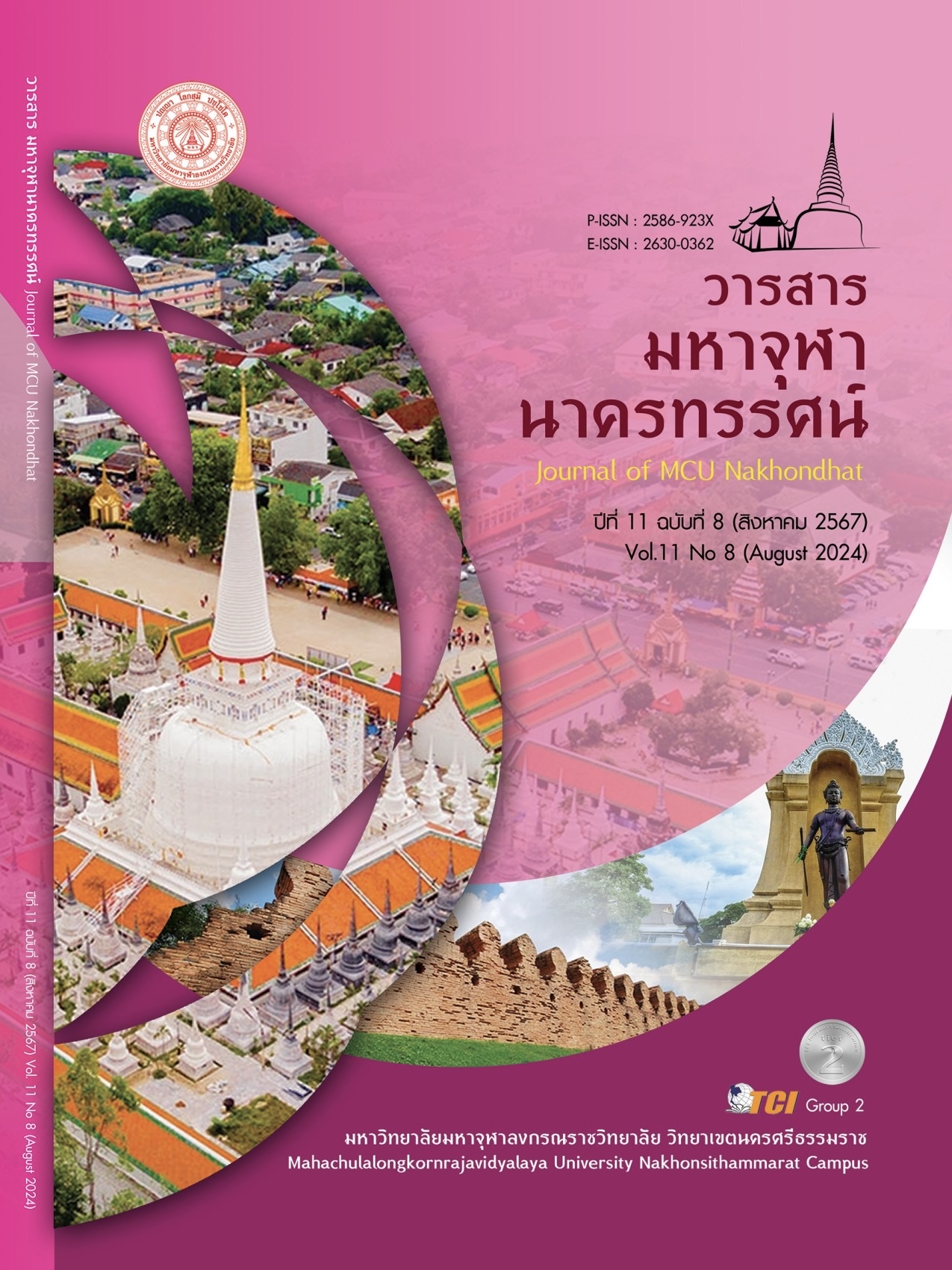STRATEGIES FOR IMPROVING HUMAN RESOURCE MANAGEMENT IN GUANGXI UNIVERSITIES
Main Article Content
Abstract
The purpose of this research was to study strategies for improving human resource management in Guangxi University with Mixed Method Research. The research population consisted of 368 university administrators in Guangxi who were experts in evaluating the appropriateness and feasibility of human resource management improvement strategies in Guangxi University. Research tools include document analysis. Structured interview and evaluation form Statistics for data analysis include mean, standard deviation. and content analysis. The research results found that strategies for improving human resource management in Guangxi University in all 5 areas were at a high level (μ = 3.76, σ = 0.89). When considering each aspect, it was found that the highest level was personnel recruitment (μ = 3.84, σ = 0.87), followed by strategic planning (μ = 3.77, σ = 0.91), followed by training (μ = 3.77, σ = 0.91), followed by performance evaluation. (μ = 3.73, σ = 0.89) and the lowest level of motivation mechanism (μ = 3.72, σ = 0.88). Strategies for improving human resource management in Guangxi University include: 1) Increasing the efficiency of strategic planning Strategies 2) Personnel development, 3) Improving training, 4) Strengthening motivation mechanisms, and 5) Improving performance evaluations. The results of the evaluation of the appropriateness and feasibility of the strategy were at the highest level. It is human resource management through planning. Controlling and coordinating human resources in an organization to achieve goals and improve efficiency. The goal is to fully mobilize the enthusiasm of employees. Improve the efficiency of university human resource management. and maximize the benefits of the organization.
Article Details

This work is licensed under a Creative Commons Attribution-NonCommercial-NoDerivatives 4.0 International License.
References
Chang, T. & Zhao, L. (2023). Historical background and realistic focus of strategic planning in American colleges and universities. Journal of University Education Science, 13(3), 84-95.
Chen, G. & Ding X. (2022). Theoretical System and Technical Route for the Preparation of "14th Five-Year Plan" Development Plan of Local Universities. Journal of Zhaoqing College, 5(1), 66-72.
Dai, Y. & Huang, J. P. (2023). The four-fold logic and pattern of Chinese-style education modernization. Journal of Inner Mongolia Normal University (Educational Science Edition), 7(5), 9-20.
Fan, W. (2022). Research on improving the effectiveness of human resource management in China's colleges and universities. China Management Informatization, 14(14), 143-145.
Gan, F. & He J. (2022). Construction of cadre personnel file management mechanism of higher vocational colleges and universities based on SWOT analysis. Journal of Inside and Outside Lantai, 6(10), 25-27.
Huang, B. (2022). New thinking on the direction of human resource management in the context of economic reform. Chinese Science and Technology Journal Database (full text version) Economic Management, 6(4), 13-15.
Li, H. (2023). A number of thoughts on the development of strategic planning in colleges and universities. Journal of Science and Education, 14(1), 7-9.
Qin, K. (2023). The practical use of incentive mechanism in human resource management in universities. Proceedings of the 2023 International Academic Forum on Finance and Management, 6(1), 195-197.
Shao, F. & Sun, H. (2022). Research on the human resource management mechanism of teachers in Chinese and American public universities. Journal of Heilongjiang Higher Education Research, 40(4), 39-47.
Wen, X. (2021). Research on the recruitment and allocation system of teachers in independent colleges and universities. Journal of Employment and Security, 11(2), 156-158.


